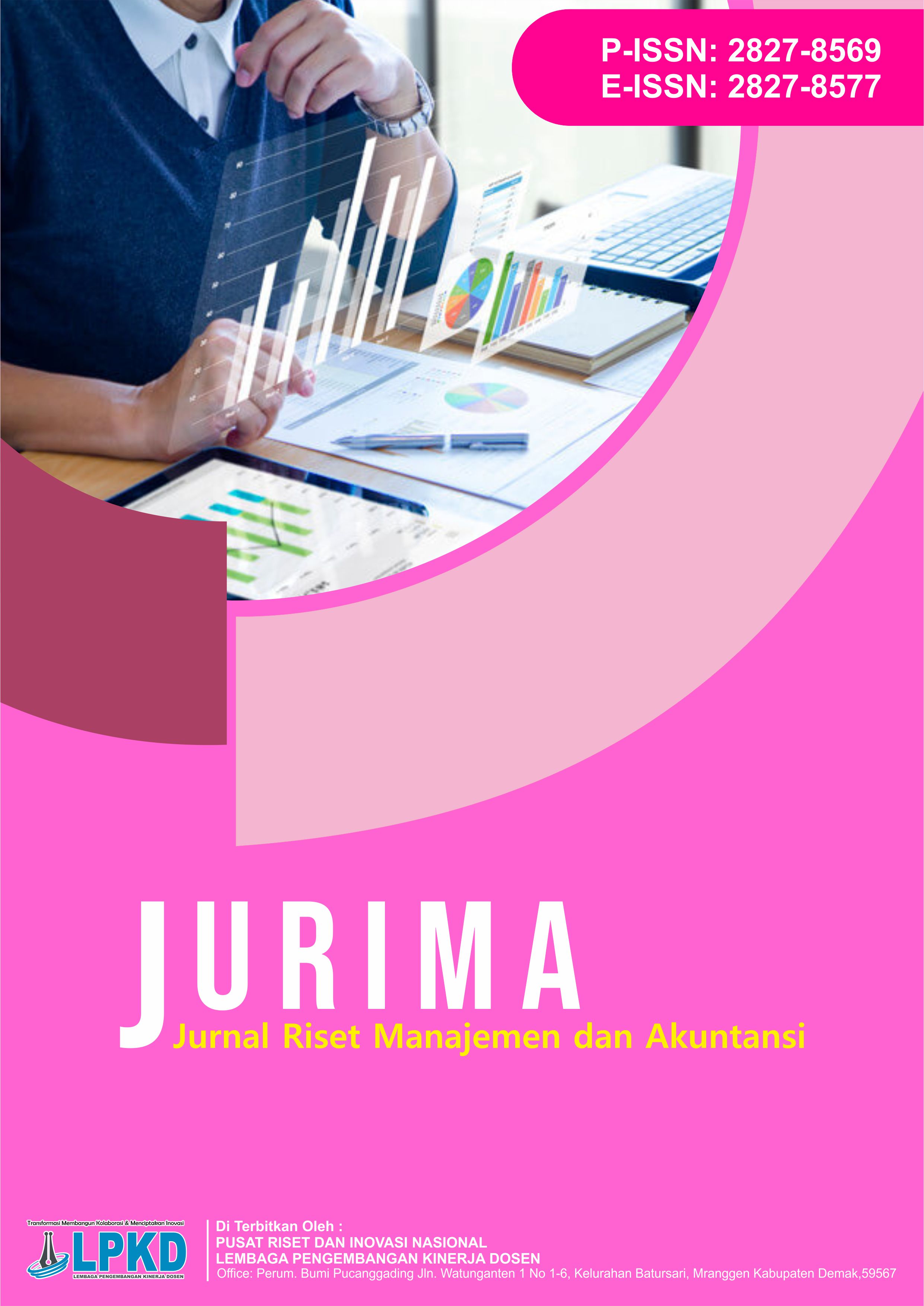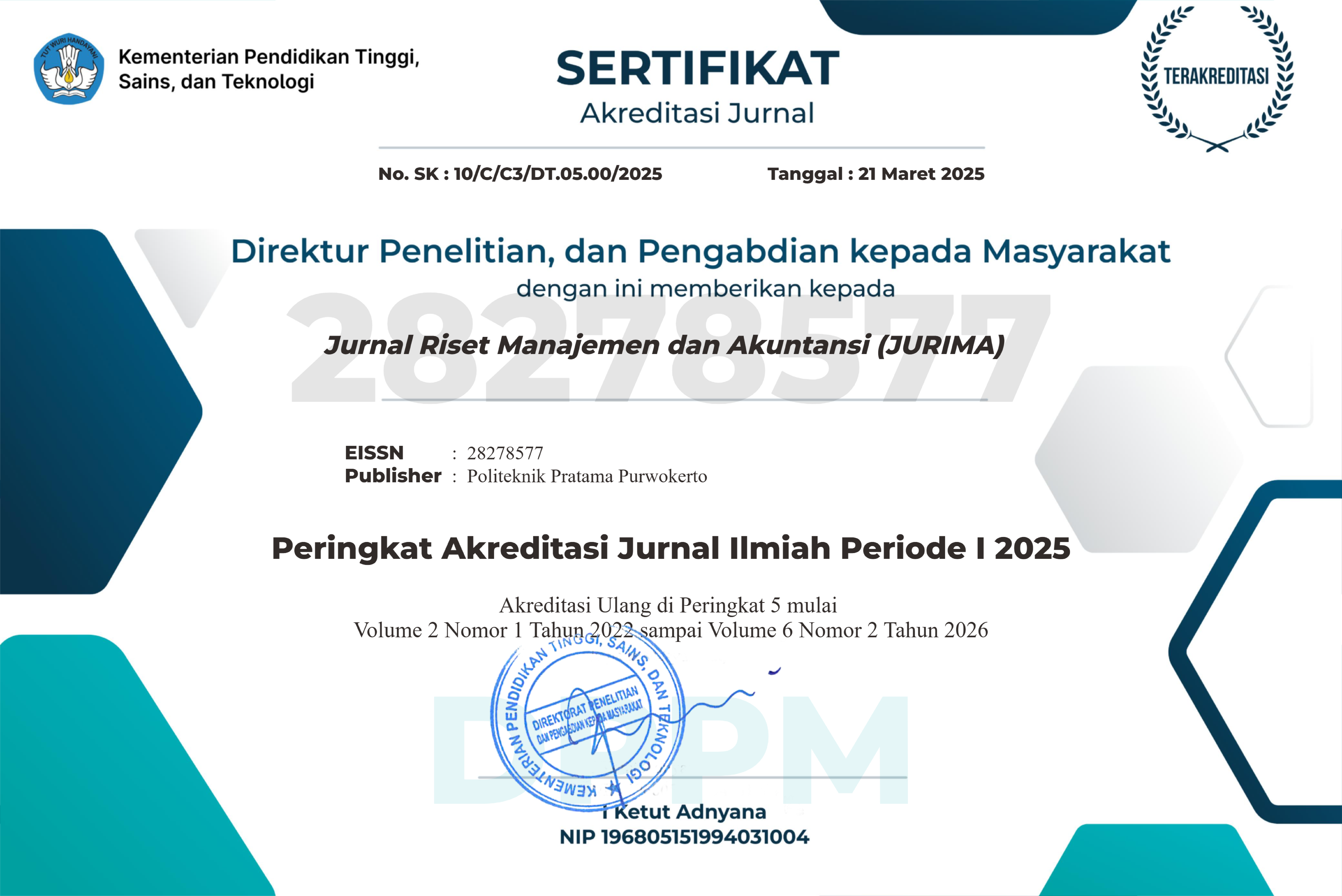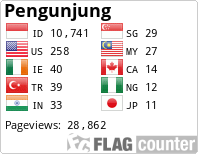Analisis Laporan Keuangan Pada Fore Coffee
DOI:
https://doi.org/10.55606/jurima.v5i1.5086Keywords:
Fore Coffee, Liquidity, Solvency, Profitability, Return on Assets (ROA), Return on Equity (ROE), Operational stability, Business growth potential, Financial management.Abstract
This study analyzes Fore Coffee's financial condition in the period 2021 to 2022 with a focus on the company's liquidity, solvency, and profitability. The results of the analysis show that liquidity ratios such as the current ratio, quick ratio, and cash ratio are at a low level, indicating the company's limited ability to meet short-term obligations. In terms of solvency, Fore Coffee faces high financial risk because total debt exceeds assets and equity, so a better financial management strategy is needed to balance the capital structure. Nevertheless, profitability performance shows positive developments with an increase in Return on Assets (ROA), indicating an improvement in the utilization of assets to generate profits. However, Return on Equity (ROE) is still negative due to the equity value that has not strengthened. Overall, Fore Coffee has promising growth potential, but needs to make improvements in financial management so that operational stability and sustainability can be maintained in the future.
Downloads
References
Arifin, K. I., & Akhiruddin, A. (2024). Analisis Kinerja Keuangan Perusahaan Menggunakan Rasio Likuiditas, Rasio Profitabilitas, Rasio Solvabilitas, Rasio Aktivitas pada PT XYZ. In Nobel Management Review (Vol. 5, Issue 4). Pustaka Setia. https://doi.org/10.37476/nmar.v5i4.4987
Faradilla, R., Nurmasari, I., & Riyana, D. (2024). ANALISIS RASIO LIKUIDITAS, SOLVABILITAS DAN PROFITABILITAS UNTUK MENILAI KINERJA KEUANGAN TLKM PERIODE 2017-2021. ILMIAH M-PROGRESS, 14. https://doi.org/https://doi.org/10.35968/m-pu.v14i1.1188
Harahap, S. (2021). Pengantar Analisis Laporan Keuangan. Rajawali Pers.
Hery. (2015). Analisis Laporan Keuangan: Pendekatan Rasio Keuangan. CAPS. https://pustaka.uniraya.ac.id/index.php?id=861&p=show_detail
Hery. (2020). Analisis Laporan Keuangan : Intergrated and Comperhesive Edtion. Grasindo. https://ebooks.gramedia.com/id/buku/analisis-laporan-keuangan-integrated-and-comprehensive
Ikatan Akuntan Indonesia. (2018). SAK (STANDAR AKUNTANSI KEUANGAN) 2019-2020. Ikatan Akuntan Indonesia. https://perpustakaan.uf.ac.id/katalog/index.php?id=10371&p=show_detail&utm_source=chatgpt.com
Irham Fahmi, S.E., M. S. (2020). Analisis Laporan Keuangan (Cet 7). Alfabeta. https://cvalfabeta.com/product/analisis-laporan-keuangan/?utm_source=chatgpt.com
Kasmir. (2019a). Analisis Laporan Keuangan (Edisi Revi). Rajawali Pers. https://inlislite.uin-suska.ac.id/opac/detail-opac?id=27283&utm_source=chatgpt.com
Kasmir. (2019b). Pengantar Manajemen Keuangan. Rajawali Pers.
Lukman Syamsuddin. (n.d.). Manajemen Keuangan Perusahaan: Konsep Aplikasi dalam Perencanaan, Pengawasan, dan Pengambilan Keputusan (Edisi Revi). PT RajaGrafindo Persada.
Philip Kotler, K. L. K. (2016). Marketing Management (15th ed.). Pearson Education. https://books.google.co.id/books/about/Marketing_Management.html?hl=id&id=UbfwtwEACAAJ&redir_esc=y
Prof. Dr. Sugiyono. (2021). Metode Penelitian Kuantitatif, Kualitatif, dan R&D (Edisi 2, C). Alfabeta.
Sofjan Syafri Harahap. (2021). Analisis Kritis atas Laporan Keuangan. PT RajaGrafindo Persada.
Sujarweni, V. W. (2021). Analisis Laporan Keuangan. Pustaka Baru Press.
Sutrisno. (2020). Analisis Laporan Keuangan. Rajawali Pers.
Wardiyah, M. L. (2017). Analisis Laporan Keuangan Cetakanke-1. CV Pustaka Setia.
Downloads
Published
How to Cite
Issue
Section
License
Copyright (c) 2025 Jurnal Riset Manajemen dan Akuntansi

This work is licensed under a Creative Commons Attribution-ShareAlike 4.0 International License.










